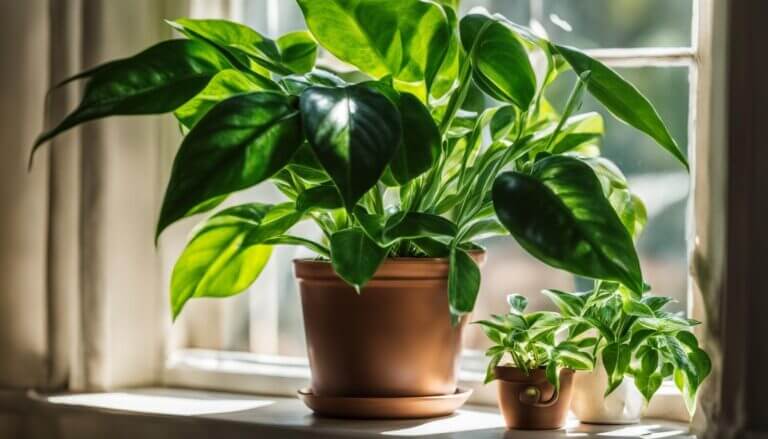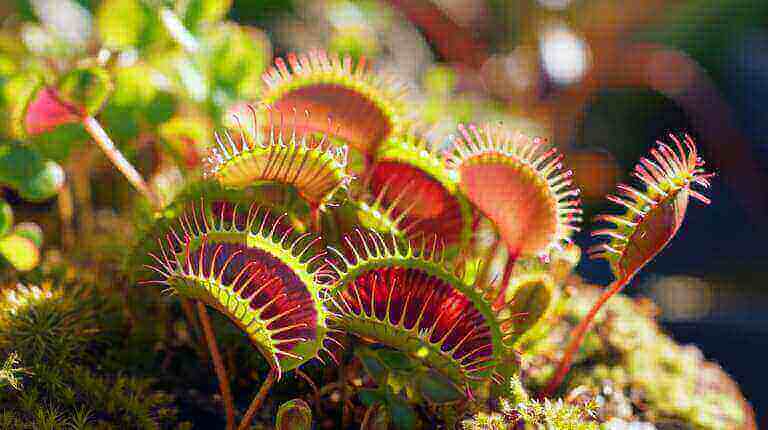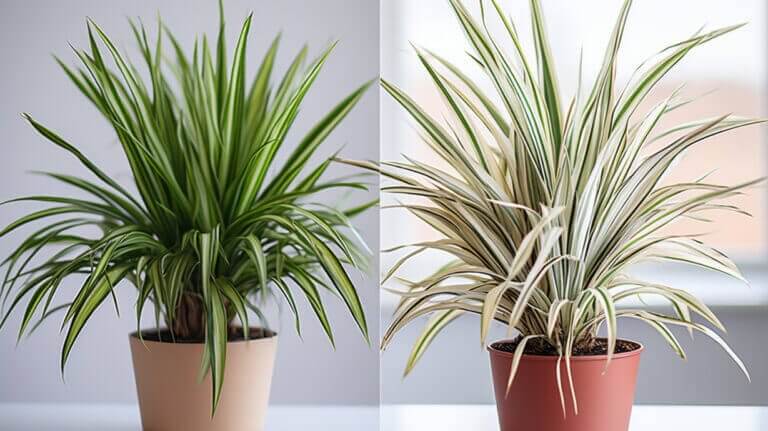How to Save a Dying Fittonia Plant or Nerve Plant: Step-By-Step Guide for Crispy Wilting Leaves
The nerve plant, also known as fittonia, is a beautiful houseplant with stunning contrasting veins in its leaves. However, it is not uncommon for fittonia plants to start wilting and develop crispy or droopy leaves. This can be caused by various factors such as overwatering, underwatering, low humidity, incorrect lighting, and soil issues. To save a dying nerve plant, it is important to address these problems and provide the proper care.
Key Takeaways:
- Overwatering and underwatering are common causes of wilting and crispy leaves in fittonia plants.
- Improving drainage, adjusting watering frequency, and using distilled water can help address overwatering issues.
- Proper watering techniques, misting, and increasing humidity can revive a dying fittonia plant suffering from underwatering and low humidity.
- Providing the right amount of light, checking soil moisture, applying fertilizer, repotting when necessary, and implementing pest control measures are crucial for the plant’s recovery.
- Common issues such as mealybugs, spider mites, leaf curling, and brown leaf edges may need to be addressed to restore the plant’s vitality.
Issues With Fittonia Turning Brown and Yellow – Overwatering Issues
Overwatering is a common problem that can lead to yellow leaves, soggy soil, and even root rot in fittonia plants. To save a dying nerve plant suffering from overwatering, it’s important to take specific measures to improve drainage and adjust watering practices. By understanding the signs of overwatering and implementing proper watering techniques, you can revitalize your fittonia plant and promote its health and growth.
One of the first steps to address overwatering is to ensure proper drainage. When the potting soil doesn’t allow excess water to escape, it can create a waterlogged environment that suffocates the plant’s roots. To improve drainage, consider repotting your fittonia plant in a pot with drainage holes or adding a layer of rocks or perlite at the bottom of the pot. These measures will help prevent water from pooling around the roots, reducing the risk of root rot.
Another important aspect to consider is the frequency of watering. Overwatering often occurs when the plant is watered too frequently, not allowing the soil to dry out between waterings. To prevent this, allow the top inch of soil to dry out before watering your fittonia plant again. This can be achieved by checking the soil moisture regularly or using a moisture meter. Adjusting your watering schedule to the specific needs of your plant will help prevent overwatering and promote healthier growth.
| Signs of Overwatering | Preventive Measures |
|---|---|
| Yellowing leaves | Ensure proper drainage by repotting in a pot with drainage holes or adding a layer of rocks at the bottom. |
| Soggy soil | Allow the top inch of soil to dry out before watering again. |
| Root rot | Use distilled water for watering to avoid chemicals or minerals that can harm the plant. |
Dealing with Underwatering and Low Humidity
Underwatering and low humidity can be detrimental to the health of your fittonia plant, causing wilting and crispy leaves. It’s important to address these issues promptly to revive a dying nerve plant and restore its vitality.
When the soil becomes dry, the fittonia plant may not be receiving enough moisture to thrive. To combat underwatering, ensure that you water the plant properly. Check the soil moisture by inserting your finger about an inch deep into the soil, and if it feels dry, it’s time to water. Remember to water thoroughly, allowing excess water to drain out of the pot’s drainage holes.
In addition to watering, increasing the humidity levels around the fittonia plant can help revive it. Mist the leaves regularly to provide a boost of hydration, or consider using a pebble tray. Fill a tray with water and place pebbles or stones in it. Set the plant on top of the pebbles, ensuring that the water doesn’t touch the pot’s bottom. As the water evaporates, it creates a humid microclimate around the plant.
If misting and pebble trays aren’t sufficient, you can also create a more humid environment for your fittonia plant by placing it in a terrarium or using a humidifier. These methods help to maintain consistent humidity levels and prevent the leaves from becoming dry and crispy.
Watering Schedule
Establishing a proper watering schedule is crucial for preventing both underwatering and overwatering. The frequency of watering depends on various factors, such as the size of the pot, the type of potting soil used, and the environmental conditions.
As a general guideline, water the fittonia plant when the top inch of the soil feels dry. However, always check the moisture level before watering as different environmental conditions may affect the plant’s water requirements. Remember, it’s better to underwater than to overwater, so err on the side of caution.
Summary:
- Underwatering and low humidity can cause fittonia plants to wilt and develop crispy leaves.
- Water the plant properly, ensuring the soil is consistently moist but not waterlogged.
- Increase humidity through misting, using a pebble tray, or placing the plant in a terrarium or humidifier.
- Establish a watering schedule based on the plant’s needs and environmental conditions.
Other Care Tips and Common Issues
When rehabilitating a dying fittonia plant, there are several other care tips and common issues to consider. One important factor is providing the plant with the right amount of light. Fittonia plants thrive in indirect sunlight, so it is essential to place them in a location where they can receive bright, filtered light without direct exposure to the sun.
Regularly checking the moisture levels in the soil is also crucial for the plant’s health. Fittonia plants prefer slightly moist soil, so it is important to perform regular soil moisture checks. Depending on the humidity levels and environmental conditions, you may need to adjust your watering schedule accordingly to maintain the ideal moisture level.
Fertilizer application is another important aspect of caring for a fittonia plant. Use a balanced liquid fertilizer specifically formulated for houseplants and apply it according to the manufacturer’s instructions. This will provide the necessary nutrients to support the plant’s growth and overall health.
Repotting is necessary when a fittonia plant outgrows its current pot or when the soil becomes compacted and doesn’t drain properly. When repotting, choose a slightly larger pot with good drainage and use a well-draining potting mix. This will give the roots enough space to grow and ensure that excess water can flow out.
Pest control is also crucial for the well-being of a fittonia plant. Common pests that can affect fittonia plants include mealybugs and spider mites. Regularly inspect your plant for any signs of these pests, such as white cottony clusters or tiny webs. If you notice any infestation, use an appropriate insecticidal soap or neem oil to control the pests and protect your plant.
FAQ
Why are the leaves of my fittonia plant wilting and becoming crispy?
The leaves of a fittonia plant can wilt and become crispy due to various factors such as overwatering, underwatering, low humidity, incorrect lighting, and soil issues.
How can I save a dying nerve plant with crispy wilting leaves?
To save a dying nerve plant, it is important to address the underlying problems. This can include improving drainage, adjusting watering frequency, providing proper humidity, ensuring the plant receives the right amount of light, checking soil moisture levels, applying appropriate fertilizer, repotting when necessary, and implementing pest control measures.
What should I do if my fittonia plant is overwatered?
If your fittonia plant is overwatered, it is important to improve the drainage of the potting soil, adjust the watering frequency, and ensure the plant is not sitting in excess water. Using distilled water can also help prevent further damage.
Can I keep a fittonia plant in my garden?
Fittonia is typically an indoor plant, but it can be kept in a garden if the conditions mimic its natural habitat. This includes indirect light, high humidity, and warm temperatures.
How do I deal with pests on my fittonia plant?
If you suspect your plant has pests, you may need to remove the plant from its current location and isolate it. Check the underside of the leaves and the root system. You can use a mild solution of water and neem oil to treat the plant.
How can I revive a dying fittonia plant?
To revive a dying fittonia plant, first identify the problem. Signs that your plant is struggling include wilting, brown tips on the leaves, and leaves that begin to curl. Adjust the care you’re providing as needed – this could mean moving your plant to a location with more indirect light, watering your plant more or less, or adjusting the temperature.







